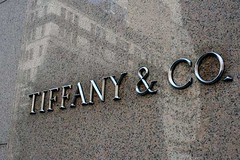
PREV ARTICLE
NEXT ARTICLE
FULL ISSUE
PREV FULL ISSUE
A PLEA FOR A GRADUATE RESEARCH ASSISTANT
Dick Johnson submitted this request for some research assistance. Can anyone help?
-Editor
This time I invited Florida collector Joe Kane, who has amassed the largest collection of Tiffany medals of which I am aware, to join me. We had planned to base a catalog of Tiffany medals on our two collections and add to it any we could learn about in the archives of Tiffany. The policy for outside researchers has changed dramatically since I last visited Tiffany. Policy now is to limit access to only six outside researchers a year. We were extremely fortunate to be granted entry this year. Not only are credentials necessary, but also a letter from a publisher or similar stating the intent to publish. Perhaps my previous two visits had eased the way. I had a dual purpose. I wanted data on every medal Tiffany had made. Plus, in my new capacity as Corporate Historian of Medallic Art Company, I wanted to see the correspondence between MACO and Tiffany. As medal manufacturer, MACO had served Tiffany in that capacity for the entire 20th century. I particularly wanted data on the earliest such business connections, in 1905 and 1906, when MACO founder Henri Weil had reduced models by Augustus Saint-Gaudens of the 1905 Theodore Roosevelt Inaugural Medal, and the 1906 Benjamin Franklin Medal, plus the 1906 Henry Wadsworth Longfellow Medal by Bela Lyon Pratt-- all three of which were issued by Tiffany. A cart filled with a dozen or more boxes awaited us as we arrived. "Start with these three boxes" our host suggested. We were served by the firm's chief archivist, who I had not met on my previous two visits. The three boxes were filled with medals. "You can photograph these if you wish" see also suggested. A summer intern was assigned to assist us. My associate Joe pulled out his Blackberry and took a sample shot. It worked fine for an image, maybe not good enough for publication, but ideal for identification. Bless modern technology. My digital camera was left unused on the worktable. As our intern unwrapped the medal from its plastic envelope, she retrieved the medal, and, often, a typed description of that medal. Someone with a good knowledge of medal terminology had described these at some time in the past. I examined each medal and passed on to Joe those that needed to be photographed. Then they were returned to their original envelope. I rejected a few. "Why are these medals of European origin in with these Tiffany medals," I asked. The answer was they had been obtained by -- or for -- the Design Department and became "study objects" for Tiffany designers. They were placed in the archives for long term storage once a designer no longer needed them. Joe took 310 shots, about 50 medals per box. We examined the remainder of the boxes on the cart with only one containing documents illustrating medals that were important enough to photograph. As I finished up examining the contents of each box, Joe was invited into the archive vault. He was shown why our project was so daunting. There were 84 boxes marked "medals." He documented that by a couple of quick shots on his blackberry. Later I stated to the archivist I wanted to come back for a two-week period to go through all those boxes. "Impossible!" stated the archivist. We had used up our one-time visit privilege. Also she would not photocopy the scrapbook or journal I had first viewed on my previous trips. Tiffany's policy is NOT to reproduce a complete book intact. However, she did provide a solution, neither of us had expected. One. Create a template of the data you desire. Two. Create a file and enter all the data by use of that template of the medals and the information you already have. Include the images of the medals you already have. Three. Then hire a graduate student in art history as a research assistant. They would allow that research assistant in one day a month to enter the data you desire -- including images of medals from any document or archive they may have -- into that file. You would have to write your catalog from that electronic file. On the drive back home we realized this was, indeed, a very intelligent approach tor our project. We didn't have to do the research work, just finance it. And what about the correspondence between Medallic Art and Tiffany I wanted to see? No files on Medallic Art. It is by client of the medal. And it's all in those 84 boxes!
To read the earlier E-Sylum article, see:
TWO NUMISMATIC RESEARCHERS AT TIFFANY'S
(www.coinbooks.org/esylum_v08n48a07.html)
The Numismatic Bibliomania Society is a non-profit organization promoting numismatic literature. See our web site at coinbooks.org. To submit items for publication in The E-Sylum, write to the Editor at this address: whomren@gmail.com To subscribe go to: https://my.binhost.com/lists/listinfo/esylum All Rights Reserved. NBS Home Page Contact the NBS webmaster 
|
